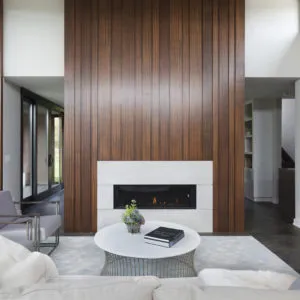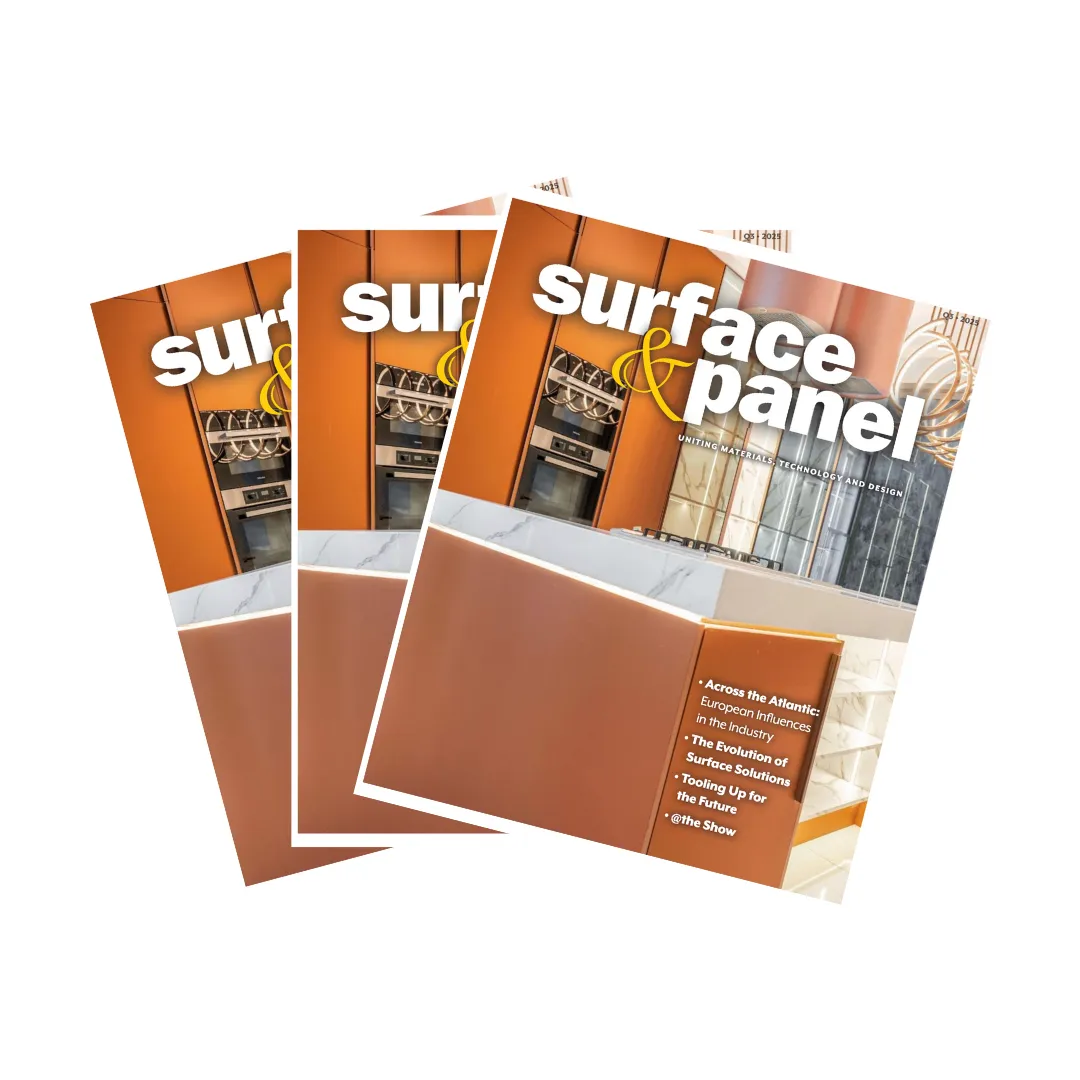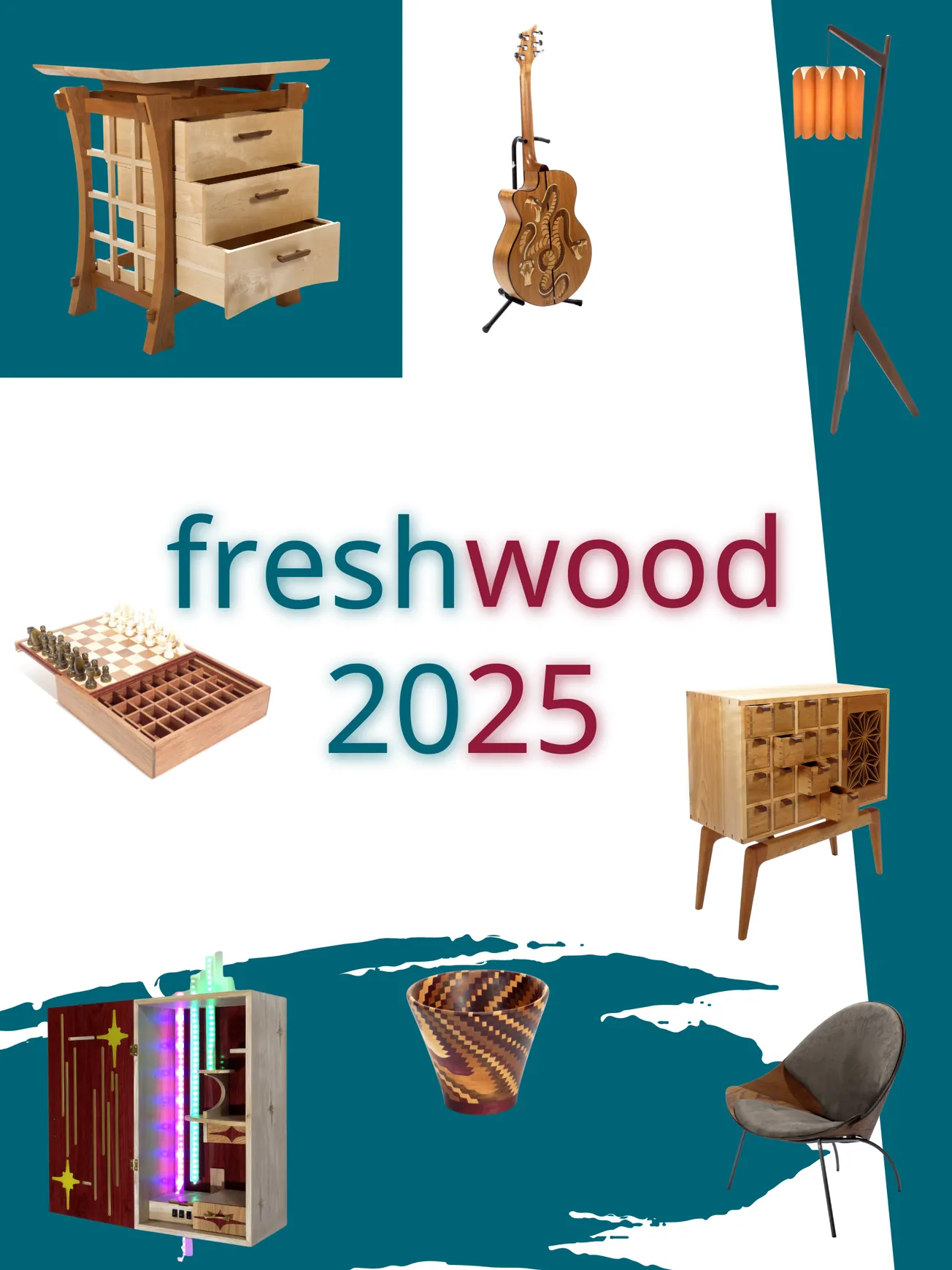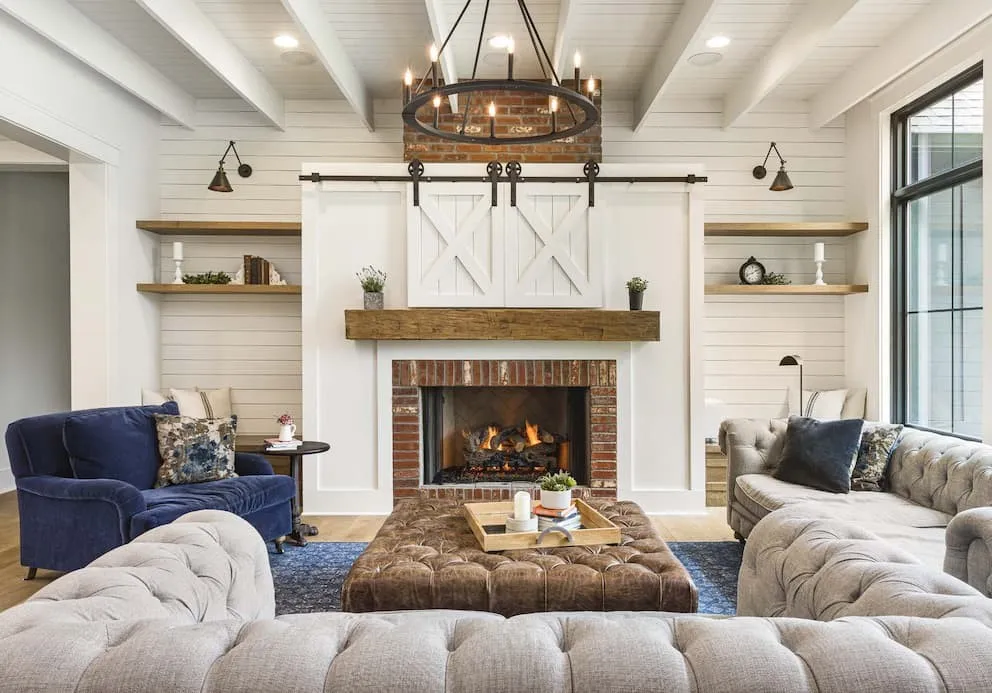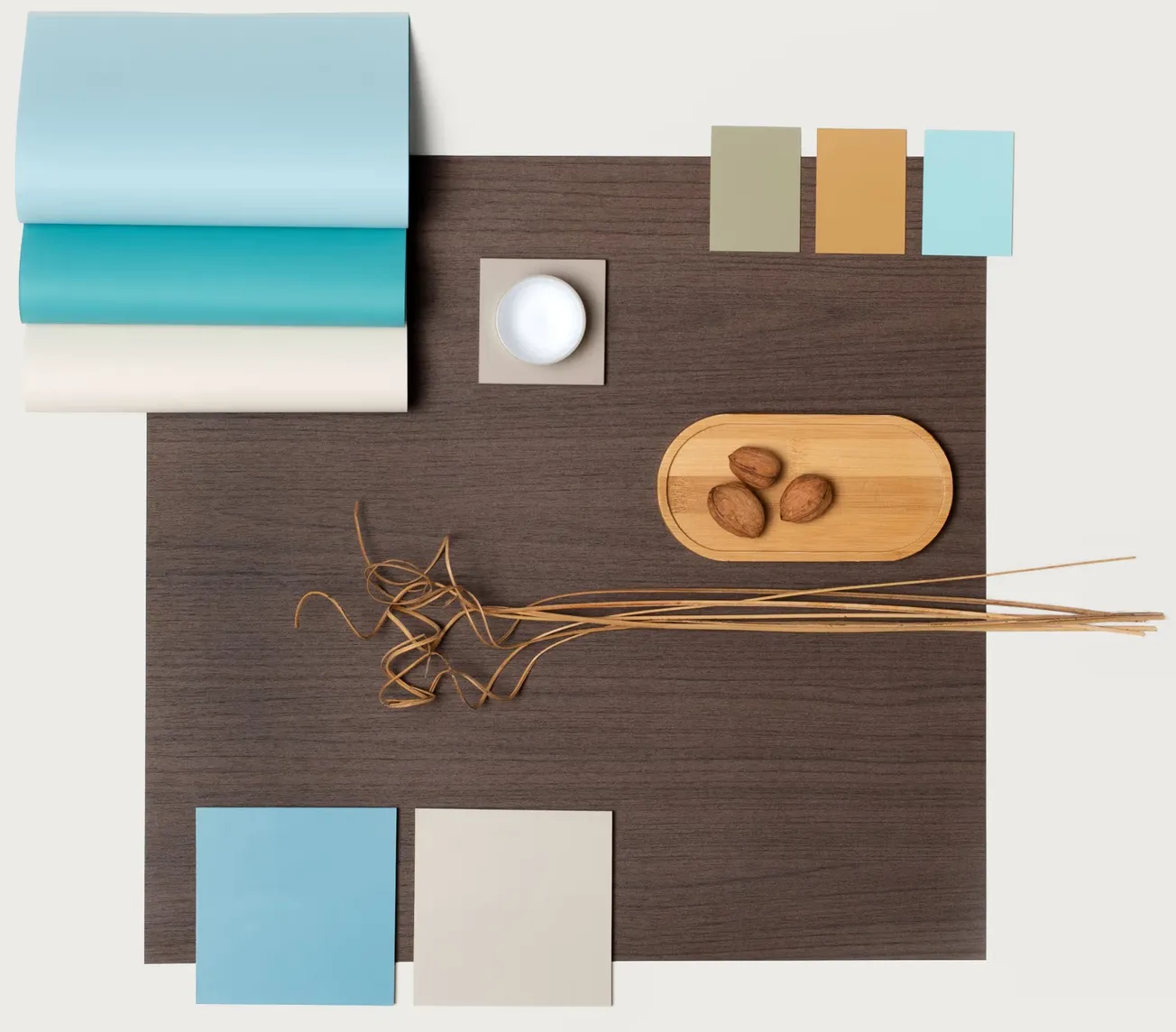Table of Contents
From the beginning, it was clear that Columbia Forest Products belonged in the mHouse. As the main man behind the mHouse, John Aufderhaar knew it. The people at Columbia knew it, as well.
The result is a two-story showpiece of a fireplace that features one of Columbia’s latest innovative materials, DesignEdge decorative hardwood plywood.
“From the first we heard of the mHouse, we at Columbia Forest Products thought it was the kind of project that was a fit for our products and our message,” said Todd Vogelsinger, Columbia’s director of marketing. “The phrases ‘finest materials and technologies’ to show ‘what’s possible in today’s residential interiors’ might have been the real hook.”
The mHouse is a residential research project built in Watertown, Wis., by Bedford Falls Communications, publisher of Surface & Panel magazine and its materialicious
website. It showcases innovations in composite panels, decorative surfaces and other materials. Columbia, based in Greensboro, N.C., is a top producer of decorative hardwood plywood.
“The concept of the mHouse was to use newer materials in creative and unique ways,” said Aufderhaar, the publisher of Surface & Panel and president of Bedford Falls Communications.
“We told the architect and designer, ‘These are the materials we want to use. Where would you want to use them to satisfy your own design?’”
“So the DesignEdge fit beautifully in that sense,” added Ryan Wagner, vice president of sales and marketing for Bedford Falls and Surface & Panel.
DesignEdge is a high-quality “multi-ply” plywood panel that can be carved, routed, beveled and laser-cut to showcase the thick and thin layers of alternating core material beneath the surface, with the edge left exposed as a decorative element. It’s made with the company’s EPA award-winning PureBond formaldehyde-free resin technology.
“We developed DesignEdge in response to the architects, designers, and manufacturers who fell out of favor with traditional multi-ply products that had to be imported from Europe and were still made with formaldehyde resins,” Vogelsinger said.
“They wanted a true NAF plywood, made in North America, that offered the option of leaving the edge exposed and utilizing the core of the panel as a dimensional decorative medium. Our solution involved a twist on the old model. Not only did we use formaldehyde-free PureBond technology to hold the panel together, but we cross-laminated layers of two different hardwood species together in a thick and thin arrangement.”
In the mHouse, the decorative face of the material is Sapele. The panels are cut into strips of varying widths and applied vertically to the fireplace wall, leaving 1-inch gaps or reveals. The wood is finished in a rich brown stain, and the exposed edges are subtly visible. The fireplace is a prominent element on the main and lower levels.
“The thick and thin layers echo the vertical theme of the strips, and it all comes together in a beautiful, organic way,” Vogelsinger said.
The reveals in the fireplace echo similar design elements elsewhere in the house and are a key part of a theme that gives the mHouse continuity.
For example, a Fiberesin desk in the study has a striated edge. Also, the Uniboard panels on the kitchen ceiling – which are thermally fused laminate with a Brushed Elm pattern – have reveals between them, as do the front door and a privacy screen on a main-floor sitting area.
“We’re taking advantage of the edges of products as design elements in this house,” Wagner said.
It’s all part of what Aufderhaar calls the “decidedly mid-century modern design” that helps define the mHouse.
The edge isn’t the only innovative aspect of DesignEdge, though. Columbia is also proud of PureBond.
“The issue of formaldehyde, in any form, has been under regulatory and consumer scrutiny for a while now,” Vogelsinger said. “We heard that train approaching long ago, when the LEED program was taking hold in the architecture and design community, and we realized that the age-old urea-formaldehyde glue we were using wasn’t going to pass muster too much longer.”
Columbia’s staff collaborated with a team from Oregon State University to invent its own alternative solution in the mid-2000s, the soy-based PureBond, and the company has produced 70 million panels with the technology.
“PureBond not only gives our panels an improved water resistance, but it gives our customers – and our employees working in the mills – peace of mind,” Vogelsinger said. “They simply don’t have to worry about any health risk or discomfort from added formaldehyde gases leaking out of the panels because there was no formaldehyde added at any point in their manufacture.
“The presence of PureBond in our decorative hardwood plywood is notable, especially in light of the fact that we produce a material that’s used for its visual, decorative value,” he said. “But this combination of natural hardwood beauty with no hidden risks inside is what’s making it more attractive to a more critical audience these days.”
As a leader in the decorative hardwood plywood industry, Columbia is compelled to demonstrate that the category is anything but static, Vogelsinger said. In fact, its tagline, “Innovating Responsibly,” points to possibilities in hardwood plywood design and production that have yet to be commercialized.
“When we made the decision a decade ago to replace the industry’s typical legacy formaldehyde resin system with a new, soy-based PureBond formulation, you could say that was a big step,” Vogelsinger said. “But it was only one of many steps in the journey we’re taking to bring hardwood plywood to the forefront of modern design materials.” s&p


